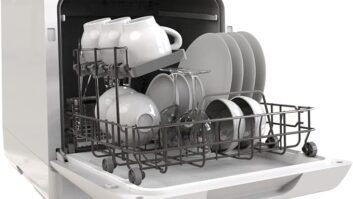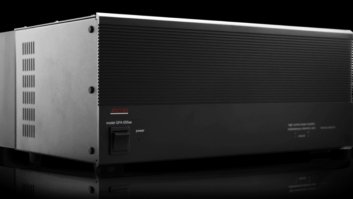The Rave-MP brand of MP3 portables will re-enter the U.S. market in late August after an absence of about four years.
The brand, marketed by GoVideo, was among the first suppliers of MP3-type portables when it launched its first models in 1999, but Rave-MP dropped out of the market the following year when parent GoVideo was acquired by now-defunct SonicBlue. SonicBlue chose to continue marketing the Rio brand of MP3 portables that it had also acquired. Rio is now owned by D&M Holdings, owner of such brands as Denon and Marantz.
Rave-MP portables will be sold mainly through mass-market general-merchandise retailers and positioned as the most affordable for the number of features offered, and they are designed to be the most easy-to-use models available, claimed Kevin Brangan, GoVideo’s VP of product marketing for digital audio. The products will be sold through mass merchants Costco, Sam’s Club, Target and Wal-Mart. In addition, Amazon.com and Circuit City will sell Rave-MP devices.
Rave is entering the mass-merchant market because these retailers have begun this year to offer “extensive” selections, Brangan said. At least one drug chain, Walgreens, has begun selling MP3 portables, but it offers only one RCA SKU, he noted.
GoVideo is able to position the brand as “providing the most for the dollar,” Brangan explained, because it can leverage the cost efficiencies of China’s TCL, which manufactures the Rave products and is the majority owner of GoVideo’s U.S.-based holding company, Opta Corp. TCL is the largest producer of cellular phones for the domestic China market and the third largest supplier of PCs for the China market, Brangan said. TCL is also the largest TV manufacturer in the world, thanks to its majority ownership of TCL-Thomson Electronics (TTE), which makes and markets TVs and DVD players.
TCL’s volume purchases of flash memory for cellphones, and the company’s economies in making HDD-equipped PCs, contribute to the low prices of Rave’s flash-memory and HDD-equipped music portables, he said.
The brand’s four flash-memory SKUs, due in stores during the last week of August, are priced up to an everyday $99 for two 128MB models and up to $129 everyday for the two 256MB versions. Each memory capacity is available in sports-style and more stylish non-sports versions.
Two HDD SKUs, available in stores a week later, are priced up to an everyday $199 for a 2.5GB model and up to an everyday $229 for a 5GB version.
All flash-memory and HDD models feature FM tuner, FM recorder, voice recorder, five-band EQ, USB 2.0, MP3 and protected-WMA playback, white-on-black LCD screen and firmware upgradeability. They’re preloaded with 16 unprotected songs from up-and-coming independent bands.
The flash-memory models deliver more than 16 hours of playback time on a single AAA battery. Their SD/MMC memory-card slots can be used to expand memory beyond the players’ standard embedded memory. The HDD models deliver more than 10 hours of playback time on their embedded lithium-ion batteries.
To enhance ease-of-use, none of the players requires consumers to load Rave-specific player software onto a PC, said Brangan. As soon as users plug one of the players into their PC, the PC’s standard Windows Media Player launches, he explained. No other models offer this feature, he said. Macs will recognize the portables as removable drives.
All models feature internal clock and Microsoft’s Janus and Media Type Protocol (MTP) technology, enabling the devices to store and play back Windows Media Audio (WMA) songs downloaded from future subscription services. The services, expected to soft launch later this year, let consumers download any song from a service’s entire catalog as long as a subscription is paid up. The songs will be playable from the PC’s HDD, and they can be transferred to compliant portables now becoming available. The songs will “time out” on the portables unless they are periodically connected to the PC, Brangan said.













